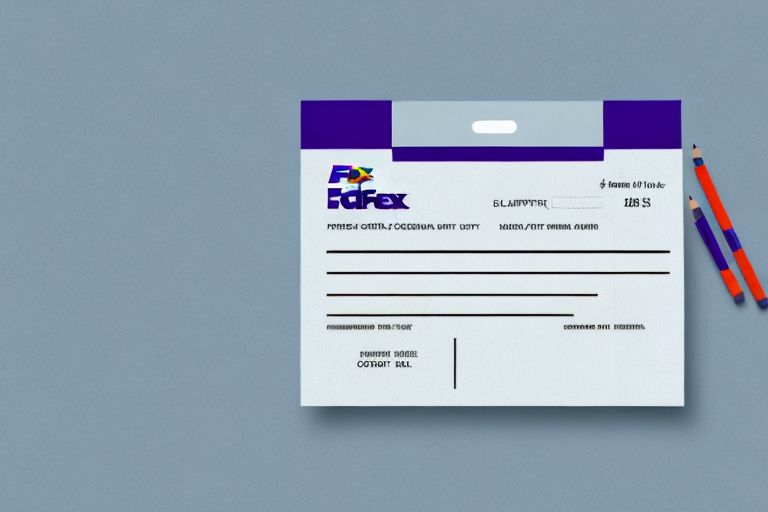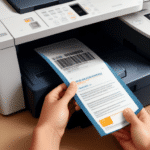How to Order a UPS WorldShip Printer
If you are a business owner or someone who frequently ships packages, investing in a UPS WorldShip printer can significantly streamline your shipping process and enhance efficiency. This comprehensive guide will walk you through the steps of ordering a UPS WorldShip printer, from assessing your shipping needs to setting up your new device.
What is a UPS WorldShip Printer and Why Do You Need One?
A UPS WorldShip printer is a specialized device designed to print shipping labels, packing slips, and other related documents directly from your computer. By integrating seamlessly with the UPS WorldShip software, this printer enables businesses to manage their shipping processes efficiently. According to UPS, businesses using WorldShip have seen up to a 30% improvement in shipping efficiency (Source).
Using a UPS WorldShip printer minimizes the risk of errors in shipping documents by ensuring labels and packing slips are printed accurately and legibly. This reduces the chances of mislabeling or misplacing packages, helping maintain a positive reputation with your customers and avoiding costly mistakes.
Additionally, a UPS WorldShip printer provides valuable data and insights into your shipping operations. By generating detailed reports on shipping activities, including the number of packages shipped, delivery times, and shipping costs, businesses can optimize their shipping strategies and make informed decisions to enhance overall performance.
Assessing Your Shipping Needs: Determining the Right WorldShip Printer for You
Before ordering a UPS WorldShip printer, it's essential to evaluate your shipping requirements. Consider factors such as the size and volume of your packages, the frequency of shipments, and the types of materials you ship. These considerations will help you choose the most suitable printer model for your business.
Volume and Frequency of Shipments
If your business handles a high volume of shipments daily, a thermal label printer may be the most efficient choice due to its speed and reliability. On the other hand, if you have a lower volume, a standard inkjet or laser printer might suffice.
Type of Materials Shipped
For businesses that frequently ship fragile or valuable items, selecting a printer capable of printing barcodes and customs forms is crucial. This ensures proper handling and compliance with international shipping regulations.
Compatibility with Existing Systems
Ensure that the WorldShip printer you choose is compatible with your current software and hardware setup. Verify system requirements and compatibility to guarantee a seamless integration and avoid operational disruptions.
Cost of Supplies
Consider the ongoing costs of consumables such as ink, toner, or label rolls. Different printer types have varying supply costs, which can impact your overall shipping expenses.
Exploring the Different Types of UPS WorldShip Printers Available
UPS offers a range of WorldShip-compatible printers, each tailored to meet specific shipping needs. The most common types include:
- Thermal Label Printers: Ideal for printing high volumes of shipping labels quickly and efficiently. They use heat to print labels without the need for ink or toner, reducing maintenance costs.
- Laser Printers: Suitable for printing packing slips and other documents that require higher quality text and graphics.
- Inkjet Printers: Best for printing shipping documents that include high-resolution images and color graphics.
When selecting a printer, also consider connectivity options. Some printers offer USB connections, while others support network or wireless connectivity, allowing multiple computers or workstations to access the printer simultaneously.
Comparing Prices and Features: Choosing the Best UPS WorldShip Printer for Your Business
After assessing your shipping needs and understanding the types of printers available, compare the prices and features of different models to find the best fit for your business. Key factors to consider include:
- Cost: Balance the initial investment with long-term operational costs, including consumables and maintenance.
- Printing Speed: Ensure the printer can handle your shipping volume without causing delays.
- Connectivity Options: Determine whether a wired, wireless, or networked printer best suits your workflow.
- Customer Support and Warranty: Opt for printers that come with comprehensive warranties and accessible technical support to address any issues promptly.
Reading reviews and testimonials from other businesses can provide valuable insights into the performance and reliability of different printer models.
Step-by-Step Guide: How to Place an Order for a UPS WorldShip Printer Online
Ordering a UPS WorldShip printer online is a straightforward process. Follow these steps to place your order:
- Visit the UPS WorldShip website and navigate to the printers section.
- Select the printer model that best fits your business needs and add it to your cart.
- Provide your shipping and billing information during the checkout process.
- Review your order details and proceed to checkout.
- You will receive a confirmation email with the estimated delivery date for your printer.
UPS often offers free shipping for WorldShip printer orders placed online. If you encounter any issues during the ordering process, you can contact UPS customer service for assistance.
Ordering a UPS WorldShip Printer Over the Phone or In-Person: Tips and Tricks
If you prefer to order your UPS WorldShip printer over the phone or in-person, consider the following tips to ensure a smooth transaction:
- Be Prepared: Know your shipping needs and the specific printer model you require before placing a call or visiting a UPS store.
- Ask About Promotions: Inquire about any current promotions or discounts that may be available to save on your purchase.
- Inquire About Warranties: Ask about available warranties or service plans to protect your investment.
- Confirm Details: Ensure that all order details, including the shipping address and estimated delivery date, are correct before finalizing your purchase.
When ordering in-person, take advantage of the opportunity to ask questions and get personalized recommendations from UPS store representatives.
Understanding the Shipping and Delivery Process: What to Expect After Placing Your Order
After placing your order for a UPS WorldShip printer, you will receive a confirmation email outlining the details of your purchase and the estimated delivery date. Shipping times may vary based on your location and chosen shipping method, typically ranging from a few days to a week.
Upon receiving your printer, follow the included instructions to set it up and connect it to your computer. If you encounter any issues during the setup process, UPS provides technical support to assist you. Additionally, UPS offers a 30-day return policy, allowing you to return or exchange your printer if it does not meet your expectations.
Setting Up Your New UPS WorldShip Printer: A Comprehensive Guide
Setting up your new UPS WorldShip printer involves several key steps to ensure it operates correctly:
- Unbox and Inspect: Carefully unpack your printer and verify that all components are included, such as power cables, USB or Ethernet cables, and installation manuals.
- Install Software: Follow the step-by-step instructions provided with your printer to install any necessary software on your computer. This typically includes the UPS WorldShip software.
- Connect to Your Computer: Use the provided USB or Ethernet cable to connect the printer to your computer. For wireless models, follow the on-screen instructions to connect to your network.
- Power On: Turn on the printer and ensure it is properly recognized by your computer. Install any required drivers if prompted.
- Configure Settings: Access the printer settings through the UPS WorldShip software and configure the printer according to your business requirements, such as label size and print quality.
Regular maintenance is essential to ensure your printer remains in optimal condition. This includes cleaning print heads, replacing ink or toner cartridges as needed, and keeping the printer free from debris.
Troubleshooting Common Issues with Your UPS WorldShip Printer and Software
Like any electronic device, a UPS WorldShip printer may encounter common issues that can affect its performance. Here are some common problems and how to address them:
Connectivity Problems
If your printer is not connecting to your computer or network, first ensure that all cables are securely connected. For network printers, verify that your Wi-Fi or Ethernet settings are correct. Restarting both the printer and your computer can also resolve temporary connectivity issues. If problems persist, consult the UPS technical support team for further assistance.
Printing Errors
Printing errors can result from software issues or hardware malfunctions. Ensure that the UPS WorldShip software is up to date and that the printer drivers are correctly installed. If the problem continues, it may be necessary to contact UPS support for a potential firmware update or hardware repair.
Paper Jams
Paper jams are common and usually easy to fix. Carefully remove any jammed paper, ensuring that no debris remains inside the printer. Verify that the correct type of paper is loaded and that it is formatted correctly to prevent future jams.
Slow Printing Speeds
Slow printing can be caused by high print quality settings or multiple print jobs in the queue. Adjust the print settings to balance quality and speed according to your needs. Clearing the print queue can also help improve printing speeds.
If troubleshooting steps do not resolve the issue, contact UPS customer support for further assistance.
Maximizing the Efficiency of Your Shipping Process with a UPS WorldShip Printer
After successfully setting up your UPS WorldShip printer, you can enhance your shipping process by leveraging its full capabilities. Here are some strategies to maximize efficiency:
- Automate Label Printing: Integrate the printer with your e-commerce platform or order management system to automate label printing, reducing manual effort and errors.
- Optimize Print Settings: Adjust settings such as label size, print density, and speed to suit your specific shipping needs.
- Regular Maintenance: Perform routine maintenance to keep the printer functioning smoothly, including cleaning and timely replacement of consumables.
- Utilize Reporting Features: Use the printer's reporting capabilities to analyze shipping data and identify areas for improvement in your logistics operations.
By implementing these practices, businesses can save time and reduce shipping costs, leading to improved customer satisfaction and increased profitability.
In conclusion, a UPS WorldShip printer is a valuable tool for businesses that manage regular shipping activities. By following this guide, you can effectively order, set up, and optimize your WorldShip printer to enhance your shipping operations.




















